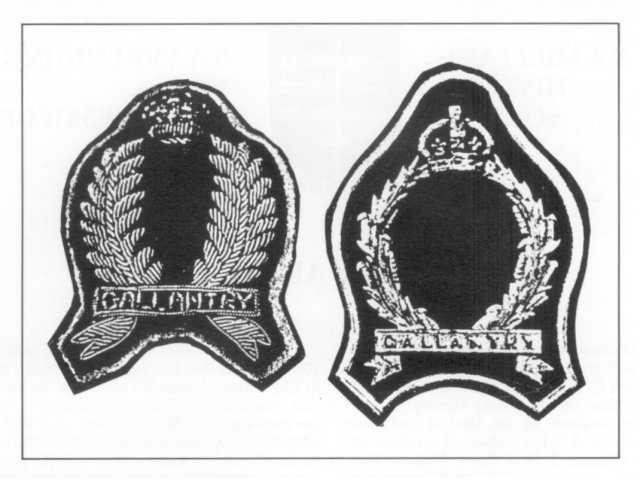1.’Positive and Negative’: The Awards of the first South African War of Independence 1880-1881.
(MHJ Vol 5 No 5 (June 1982) by S Monick.)
I am able to refer you to more information on L Cpl Joseph John Farmer, VC, AHC by Lt Col W E I Forsyth-Jauch OBE, MA, MB, MFCM, in the Journal of the Royal Army Medical Corps 1981; 127:100-102 in which he states that Joseph John Farmer was born on 5 May 1854. He attended a local school in King’s Cross, and thereafter was apprenticed to the building trade. However, at the age of 13 years he went to sea with the Mercantile Marine serving aboard English and American ships. In 1875 he was shipwrecked off the Isle of Wight, and again a year later in a hurricane off Hong Kong. He left the sea in 1878, and on returning home he fell ill with smallpox.
It was then that Farmer’s career changed direction. Whilst still under medical care he saved the life of a delirious patient who tried to jump out of a window. When he had recovered from his illness, he took an appointment as a night porter to look after demented patients. Another similar appointment followed, and after having his interest in medical matters further awakened he joined the Army Hospital Corps on 27 February 1879. Following a course in anatomy and ambulance work he left for the Cape of Good Hope.
Private Farmer was present at the battle of Rorke’s Drift in the Zulu War, and when the South African War broke out he served in a Field Hospital. He then served in the relief column sent to the beleaguered garrisons of Potchefstroom and Lydenburg, and saw action at Laing’s Nek and again at Majuba Hill. This was a plateau topped hill considered to be easily defendable in the opinion of the Commander, Maj Gen Sir George Pomeroy Colley, by his force of 700 odd officers and men, elements of 58th, 60th and 92nd Regiments and the Naval Brigade. The Boers however climbed the hill at first unseen and pressed home their attack until on 27 February 1881 the defenders’ ammunition was all expended.
L Cpl Farmer was giving first aid with another medical orderly assistant to Sir Arthur Landon of the Army Medical Directorate. Both were shot almost simultaneously, and Farmer realizing what was happening waved a bandage and shouted to the Boers that they were shooting at wounded men. He was shot in the right wrist, dropped the bandage which he transferred to his other hand and continued to wave until that arm was shot through. Farmer was one of the few men to have survived what was a disastrous day.
The citation in the London Gazette read as follows:
‘For conspicuous bravery during the engagements with the Boers at the Majuba Mountain when he showed a spirit of self abnegation and an example of cool courage which cannot be too highly commended. While the Boers closed with the British troops near the wells, Corporal Farmer held a white flag over the wounded and when the arm holding the flag was shot through he called out that he had ‘another’. He then raised the flag with the other arm and continued to do so until that one also was shot through. Following his recovery L Cpl Farmer was discharged from the Army, and joined the Corps of Commissionaires, working in a manufacturing firm in Fulham.’
Later in life Mr Farmer, VC, gave his own account of that day:
‘When the Boers closed in with the British troops near the hills, another man and myself were helping Sir Arthur Landon of the Army Medical Directorate to tend the wounded, who were falling thick and fast. Both cried out that they were hit, and the soldier I was bandaging was, I believe, killed at the same moment. Sir Arthur Landon, I ought to say, was one of the best and bravest men who ever lived or died. Well, as soon as I saw what the Boers were about, I jumped up, waved the bandage I had been using – which might serve the purpose of a white flag – and shouted that they were shooting wounded men. The enemy either did not know the usages of civilized warfare, or, in their blind fury, they did not heed what they were about. Anyhow, a Boer took a pot-shot at me, and the bullet went through my right wrist. “Here is the mark,” he said. The wound has affected the free use of my hand ever since, though not disabled it. As the official report of the affair by Maj Elliott says, I, on being hit in the right arm, called out “I have another!” transferred the white “flag” to the left hand, and continued to wave it.
My Boer friend, however, was a persistent beggar, for he had another try, and this time he shot me through the left elbow joint. His endeavours rather convinced me, notwithstanding opinions to the contrary, that the Boers are not such remarkably good shots as they are said to be. I was, however, placed hors de combat; but the surgeon, though himself mortally wounded, injected morphia to deaden the pain, and so the limbs were saved to me. The left arm is, however, a good deal wasted and crippled.’
Joseph Farmer remained in employment in Fulham until he was 74 years old, and died two years later on 30 June 1930. The coffin was borne on a gun carriage through the streets of Fulham lined with people. His tombstone in Brompton Cemetery was a boulder with the inscription: ‘This rock was sent from the scene of the battle of Majuba Hill. . . erected by his family, old comrades in the Durban Light Infantry, together with comrades of his Corps and Fulham citizens. Rest in Peace’.
It was brought to the notice of Regimental Headquarters RAMC, through the medium of a report by ‘Peterborough’ of the Daily Telegraph, that the grave/headstone was in a dilapidated state. Action was taken by RHQ, RAMC for the grave to be tidied up, and for the inscription on the Majuba rock to be re-cut.
2. UNIQUE ‘GALLANTRY’ BADGE OF VC RECIPIENT
A special Gallantry’ badge purported to have been worn by the late Lt Col Arthur Martin-Leake, VC and Bar appears to be unique and is the cause of much speculation. A query was referred by an acquaintance for possible assistance in finding a solution, he in turn having been approached by Lt Col R Eyeions, Curator of the RAMC Historical Museum, Aldershot.

The discovery of the badges can best be described by quoting from a letter dated 10 June 1987, from Lt Col Eyeions: Could I now please change the subject entirely and appeal for help from you as you seem to have access to all sorts of information from the South African War. Last year the RAMC refurbished the grave of Lieut-Colonel A Martin-Leake, VC and Bar and unveiled a plaque to his memory in the church of High Cross Church in Essex. While talking to one of the ladies of the Village at the event, it transpired that she, or someone in her family, worked in the house of Martin-Leake. At some stage he gave her two badges, photographs of which are enclosed. One badge is of gilt metal the other of some fabric, presumably for sewing on to summer and winter weights of uniform. The consensus of opinion is that these two badges were connected to the South African Constabulary as they are not recognized by the British or Indian armies. Is it possible for you to confirm this please?’
My correspondent states that he has checked thoroughly and that there seems to be no connection with the S A Constabulary. He has also received confirmation that Martin-Leake did wear the badges.
Martin-Leake earned his first VC at Vlakfontein in February 1902 (Gazetted in May) as a surgeon-captain and his second (Bar) at Zonnebeke, Belgium, in 1914 as a lieutenant (RAMC). He qualified in 1898 and joined the Heresfordshire Company of the Imperial Yeomanry as a Trooper in 1899 because he could not obtain employment in his profession. He subsequently transferred to Baden-Powell’s Police and was commissioned with the rank of surg-capt. When the transfer took place is not recorded in any of my documents.
During the Anglo-Boer War a large private hospital, the ‘Imperial Yeomanry Hospital’ was established at Deelfontein (Cape) and later a branch of this hospital (tented) was moved to Pretoria and was situated to the East in the area approximately where Arcadia now is. It operated from August 1900, to September 1901, when it was handed over to the Government as a free gift.
His first VC was earned while attending a wounded officer and others under heavy fire. He was wounded in the right arm and thigh (citation mentions three wounds). The second was earned under somewhat similar circumstances. The 1902 VC was, incidentally, the last won during that war and he is one of only three to have been awarded a Bar. He qualified as a FRCS in 1903, and is also stated to have seen service in World War II with a mobile medical unit.
Questions which arise are:
(a) Is the crown on the badge that of Edward VII or George V?
(b) When, where and by whom were the badges presented?
(c) On whose recommendation/initiative?
Any information, clues or ideas from readers of your Journal would be appreciated. D O Stratford Col SAMC (Retd) for the South African Military Society. He can be contacted at: scribe@samilitaryhistory.org
This post/article was copied and taken from this page of the The South African Military History Society and used with their kind written permission. Thank you so much Joan Marsh!
